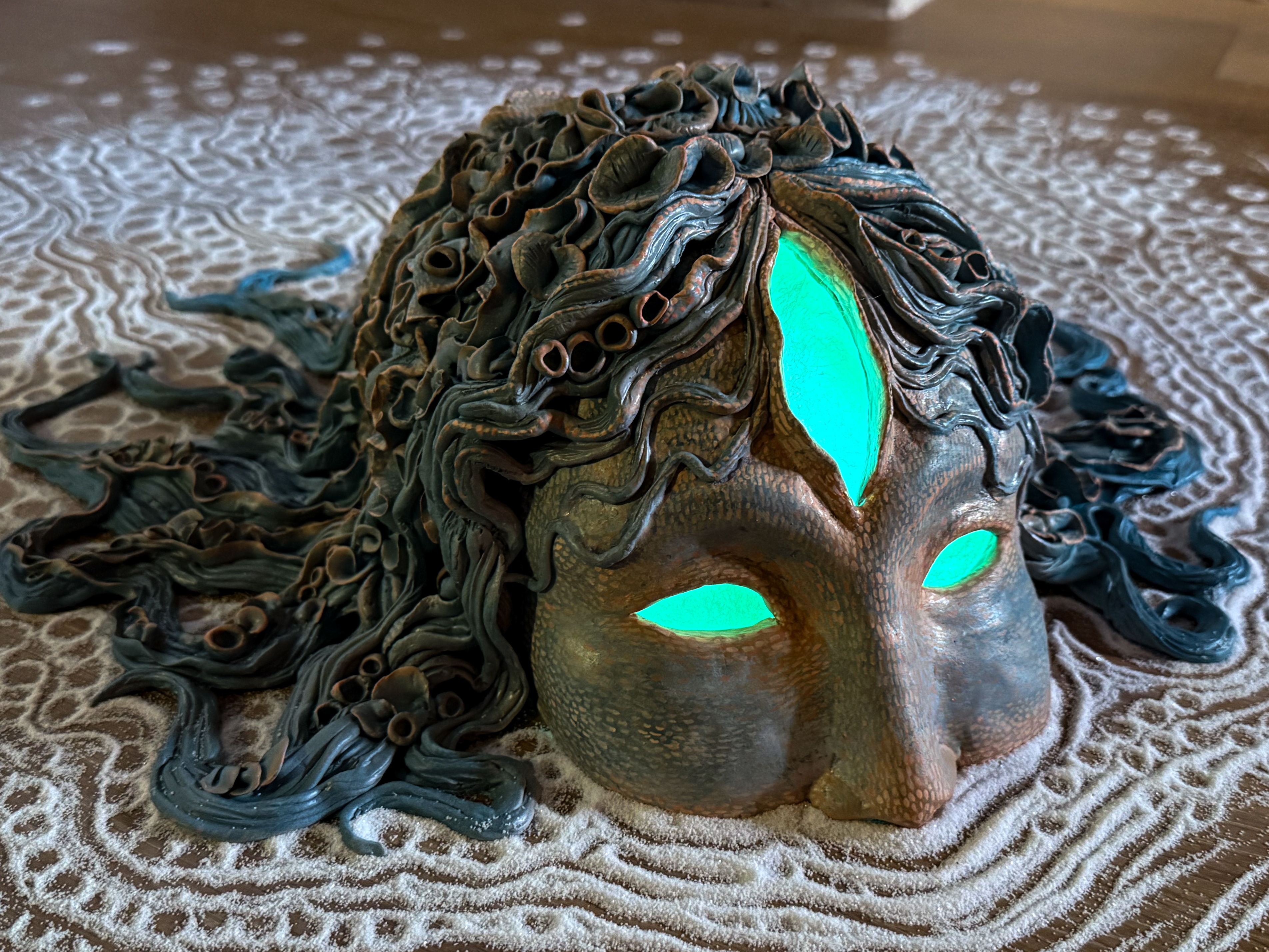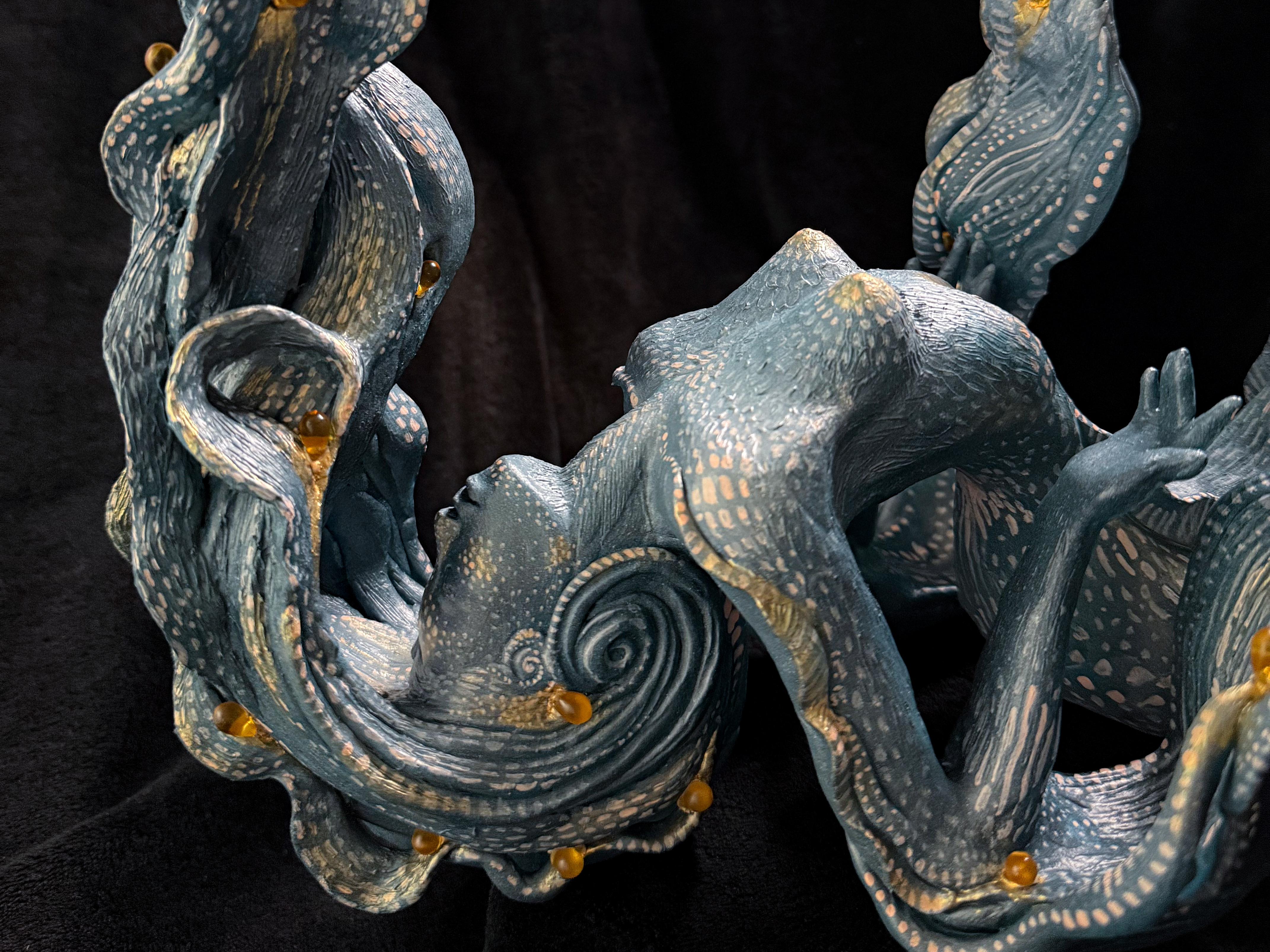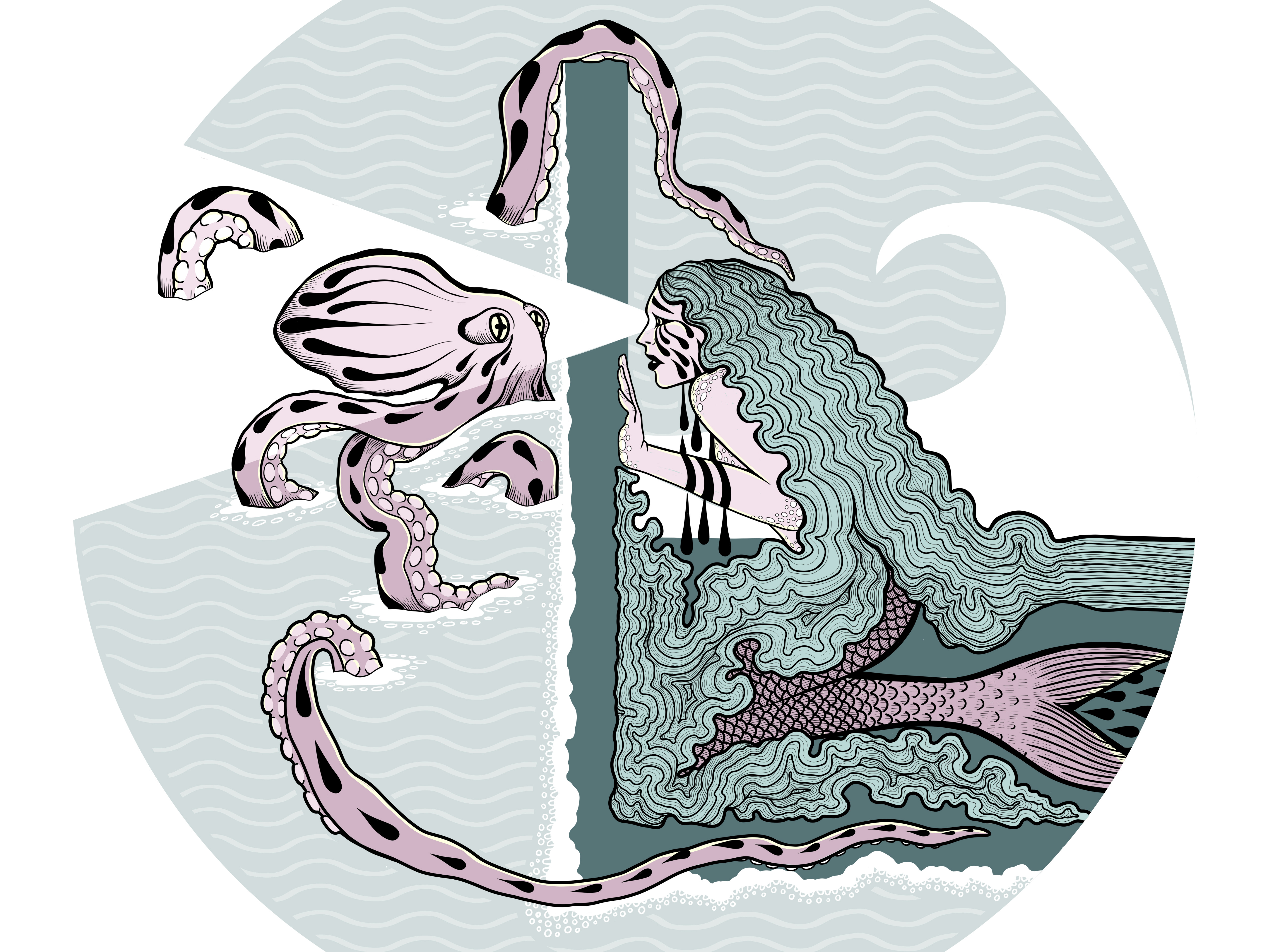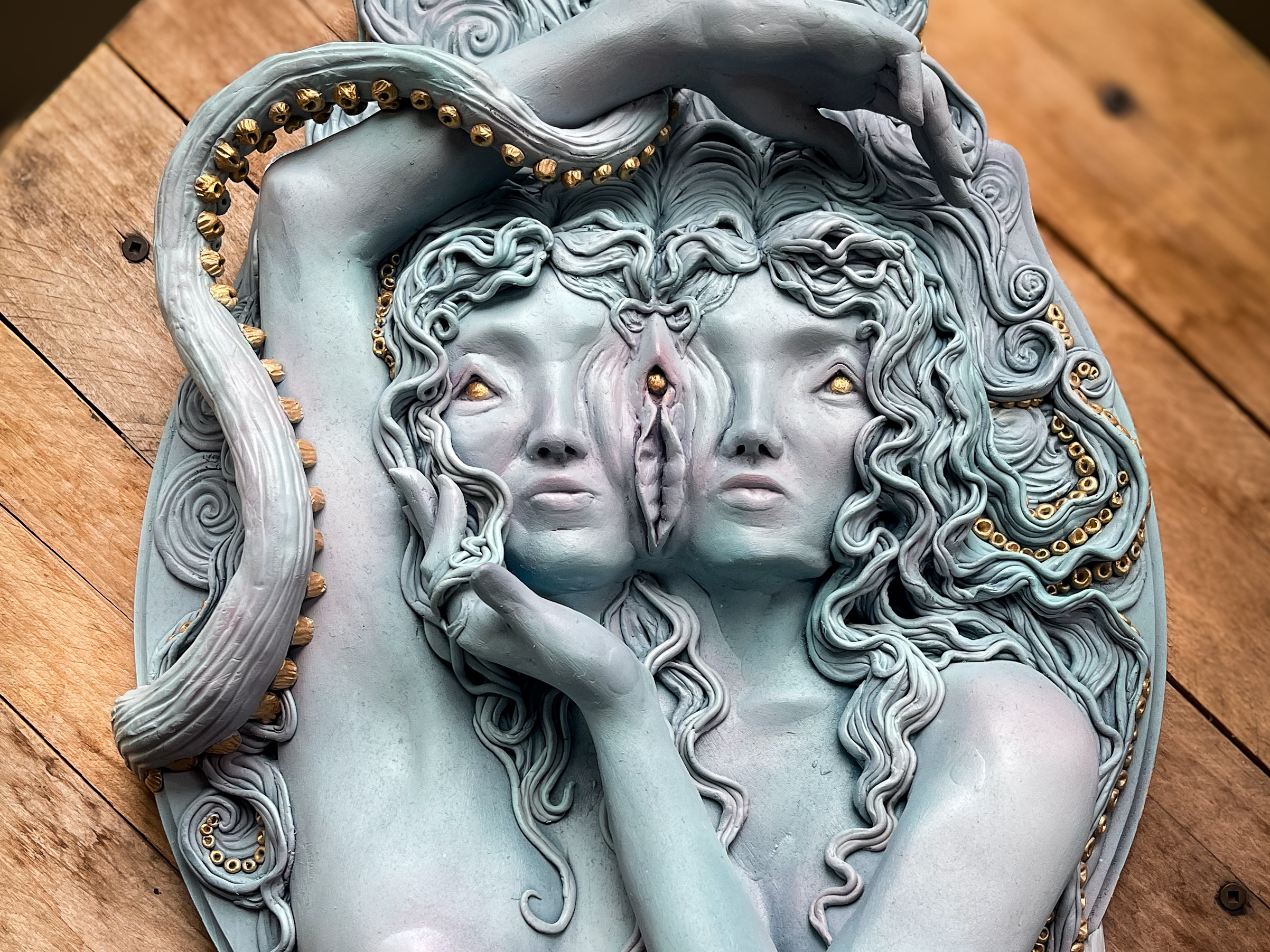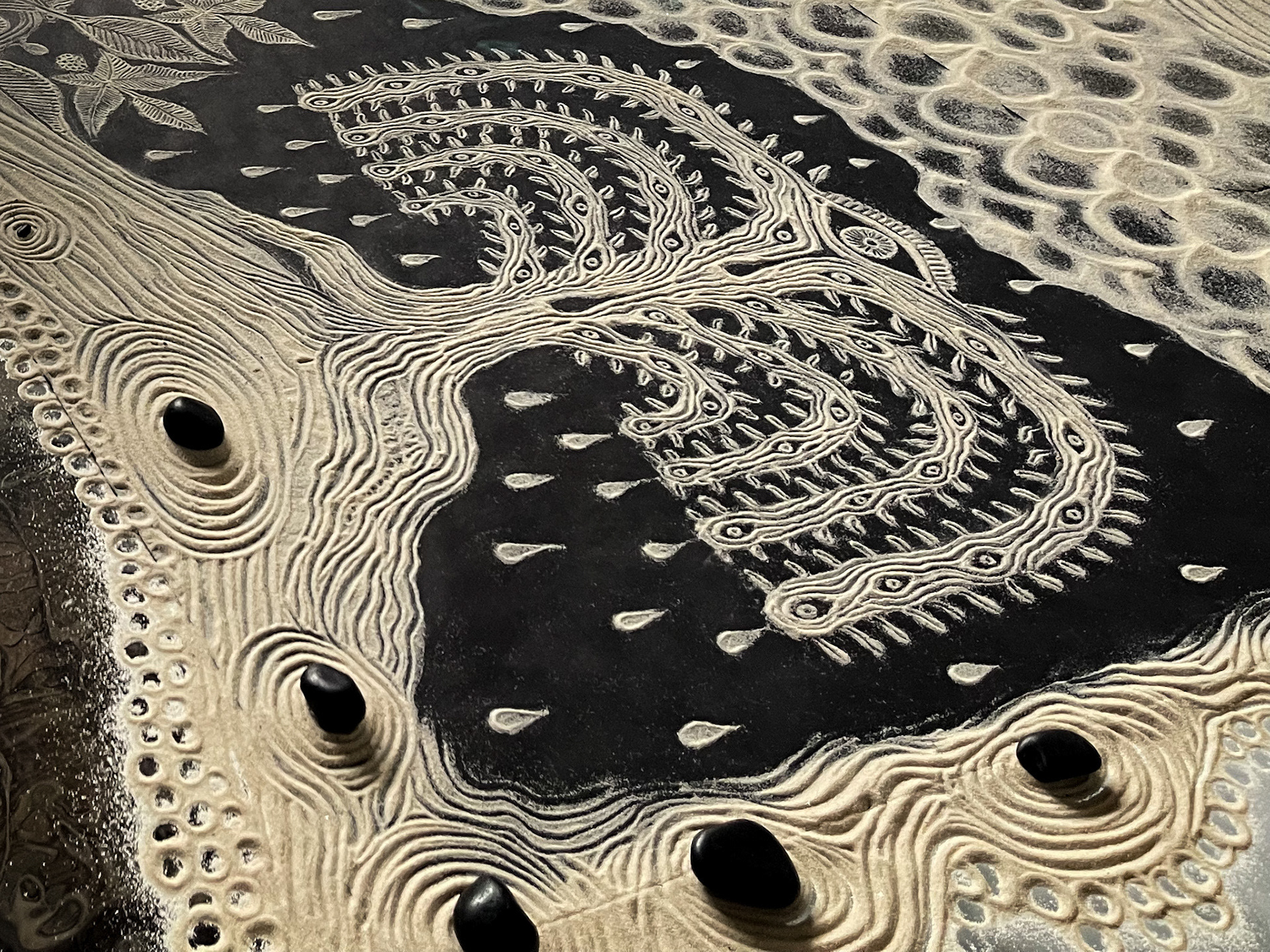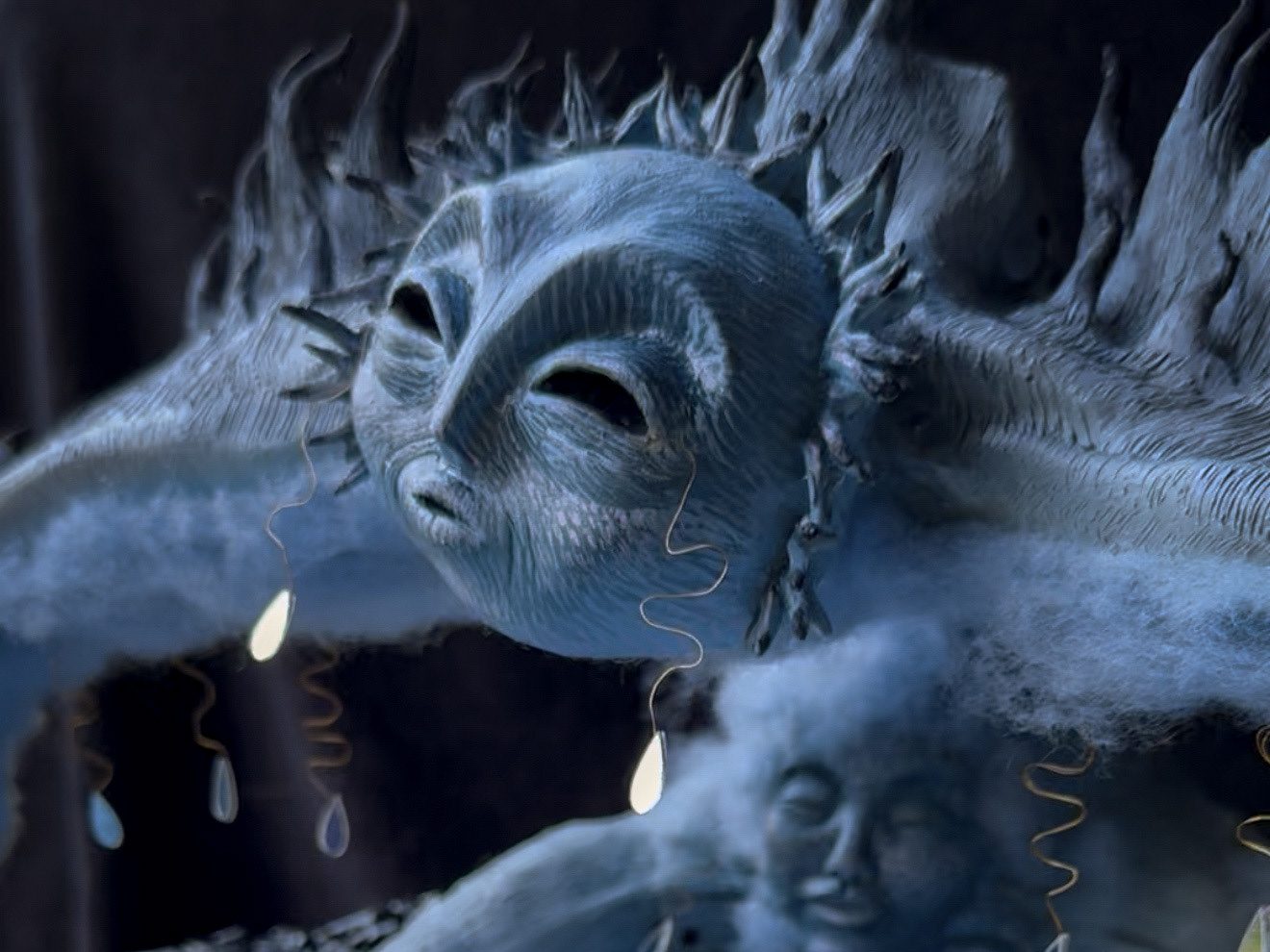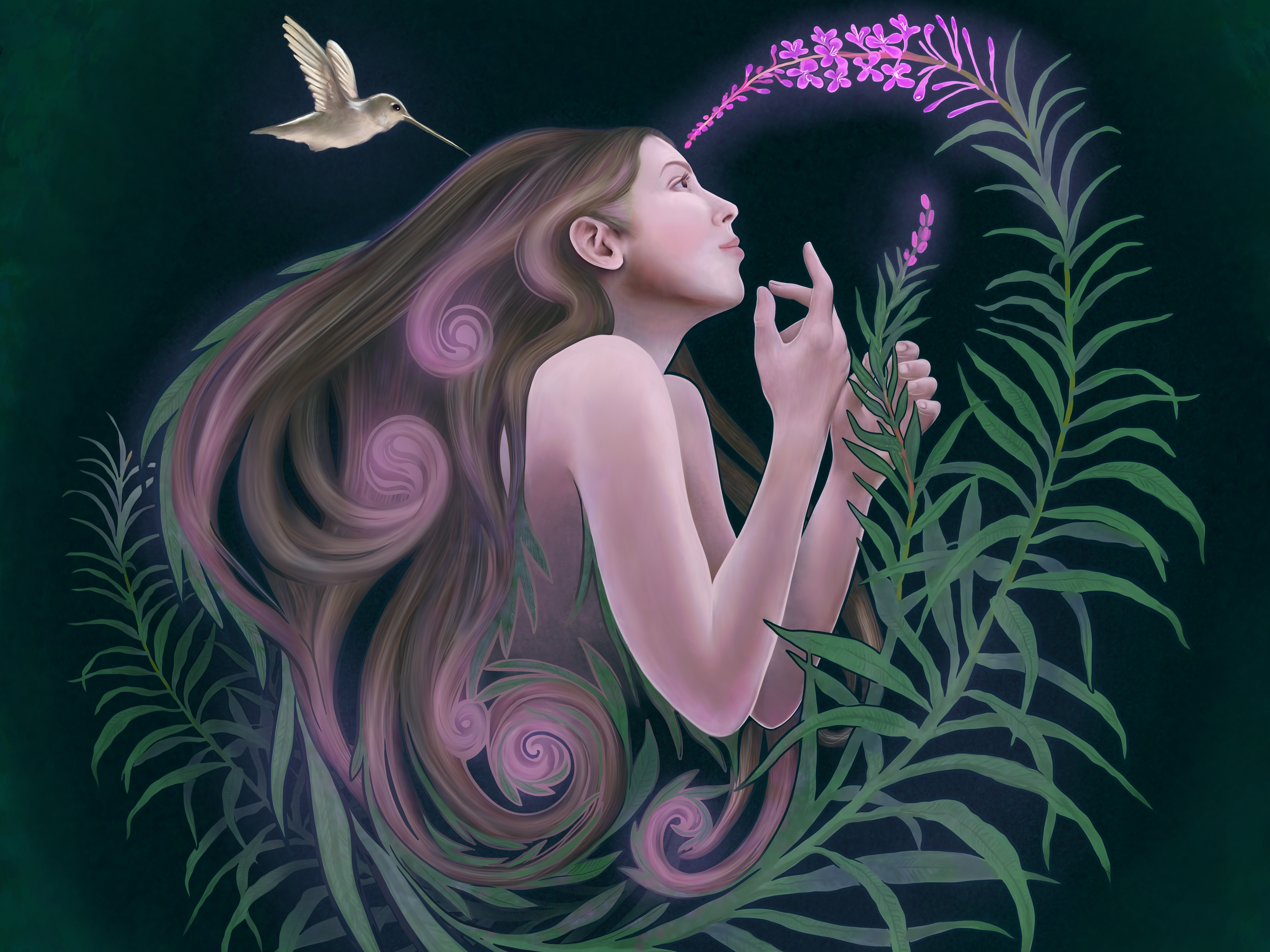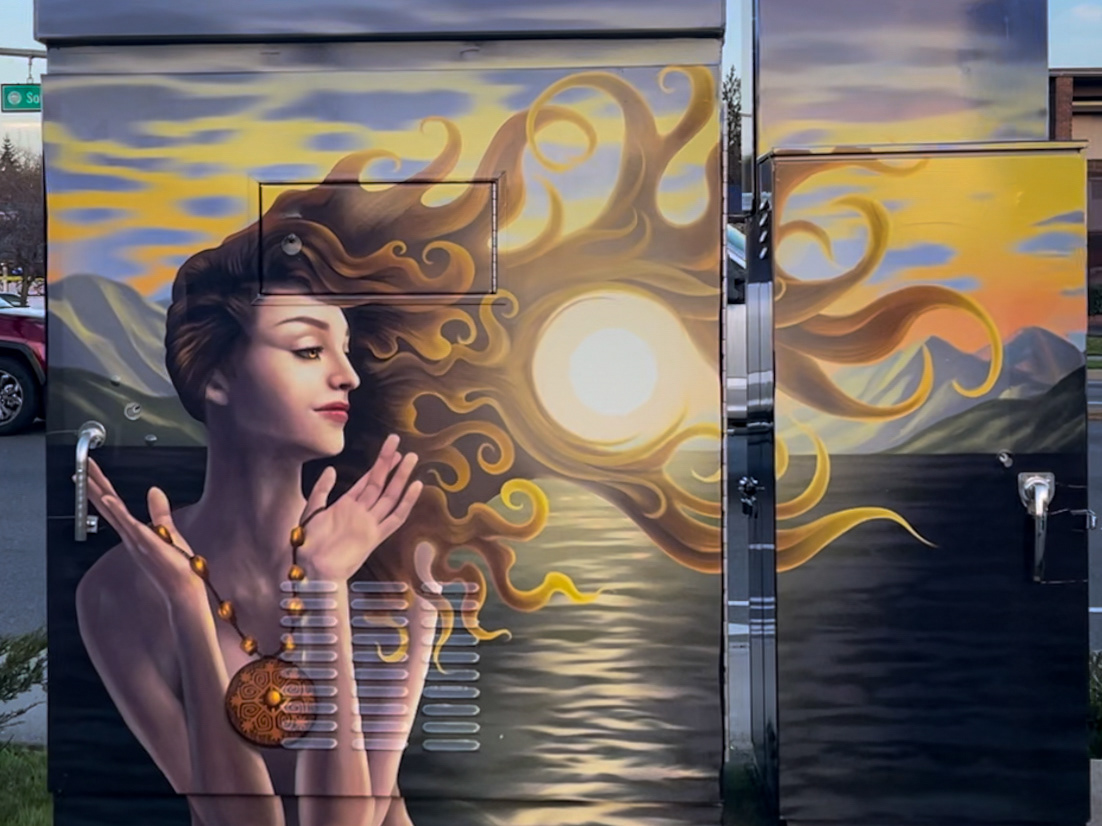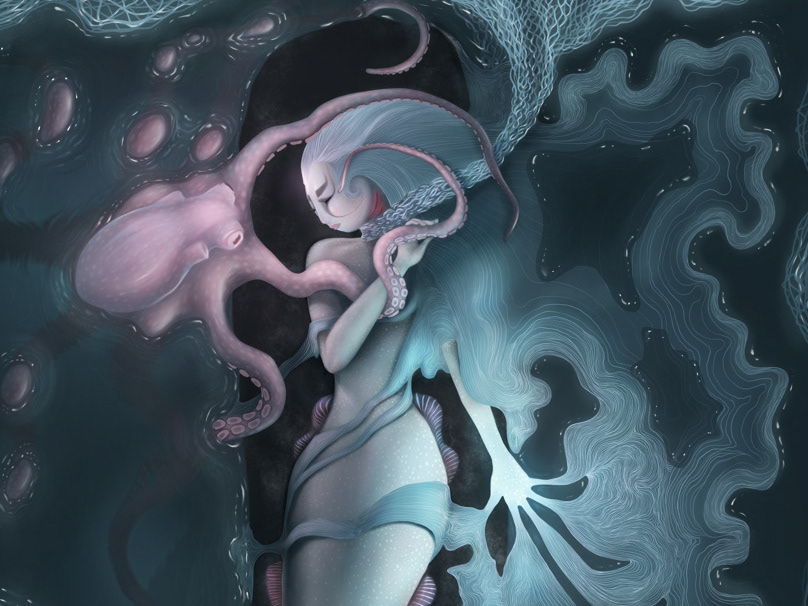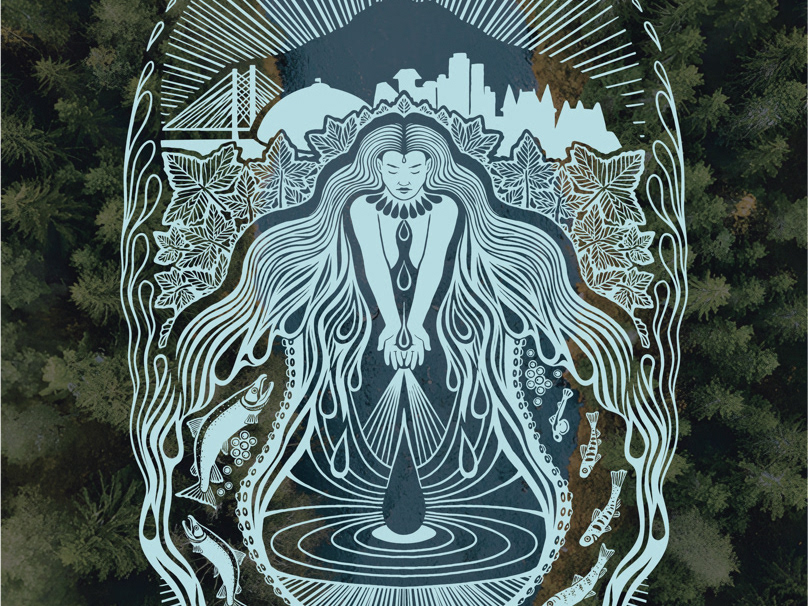Mother of Waters depicts Mount Tahoma with a lenticular cloud. To see this cloud is to see the water being birthed that will then rain down upon all different parts of our watershed.
“Mother of Waters” is a 20'x20' installation sponsored by Tacoma Ocean Fest at the Foss Waterway Seaport Museum. The installation depicts the sacred relationship between mountains, rivers, and the ocean, each giving birth to the other in an endless cycle of life and rebirth. In particular, this Mother of Waters depicts our local Mount Tahoma, mother of the waters in the Puyallup Watershed. Emanating from her core is the Puyallup River, and the sand drawing at the river's shores represent the lands, forests, people, and ecosystems the waters nourish. The river ends where the viewers stand, signifying that we, the viewers, are the ocean.
The central figure is inspired by the Latvian concept of māte, or sacred mothers that birth different aspects of the world around us. This installation helped me feel my ancestors’ concept of the māte by creating my own, depicting the sacredness of our relationship to local waters in ways both ancient and new.
The sand drawing references a traditional Slavic practice where women bless a space with symbols drawn with sand on the floor. Sand drawings celebrate the temporary, and are swept up and returned to the ocean with gratitude. We did this together in a community workshop, returning the sands to the Foss Waterway.
The land this installation stands on and the sea right next to it is sacred to the Puyallup Tribe, who have had their own ways of relating to this sacredness since Time Immemorial. My greatest hope is that this installation can inspire you to follow your own ancestral roots back to a sacred relationship with the earth and ocean, and to let it drive you toward a better understanding of decolonization, indigeneity, and sovereignty, so we can find our place in supporting that together.
...
“Mother of Waters” es una instalación de 20'x20' patrocinada por Tacoma Ocean Fest en el Foss Waterway Seaport Museum. La instalación representa la relación sagrada entre las montañas, los ríos y el océano, cada uno dando a luz al otro en un ciclo interminable de vida y renacimiento. En particular, esta Mother of Waters representa nuestro monte Tahoma local, madre de las aguas en la cuenca hidrográfica de Puyallup. De su núcleo emana el río Puyallup, y el dibujo de arena en las orillas del río representa las tierras, los bosques, las personas y los ecosistemas que nutren las aguas. El río termina donde están los espectadores, lo que significa que nosotros, los espectadores, somos el océano.
La figura central está inspirada en el concepto letón de māte, o madres sagradas que dan a luz diferentes aspectos del mundo que nos rodea. Esta instalación me ayudó a sentir el concepto de mis antepasados sobre el māte al crear el mío propio, que representa la sacralidad de nuestra relación con las aguas locales de maneras antiguas y nuevas.
El dibujo en la arena hace referencia a una práctica tradicional eslava en la que las mujeres bendicen un espacio con símbolos dibujados con arena en el suelo. Los dibujos en la arena celebran lo temporal y se recogen y se devuelven al océano con gratitud. Hicimos esto juntos en un taller comunitario, devolviendo la arena al canal Foss.
La tierra en la que se encuentra esta instalación y el mar justo al lado son sagrados para la tribu Puyallup, que ha tenido sus propias formas de relacionarse con esta sacralidad desde tiempos inmemoriales. Mi mayor esperanza es que esta instalación pueda inspirarte a seguir tus propias raíces ancestrales hasta una relación sagrada con la tierra y el océano, y dejar que te lleve hacia una mejor comprensión de la descolonización, la indigeneidad y la soberanía, para que podamos encontrar nuestro lugar en el apoyo a eso juntos.
The Making of the Mother of Waters Figure
The Making of the Sand Drawings in the Installation
